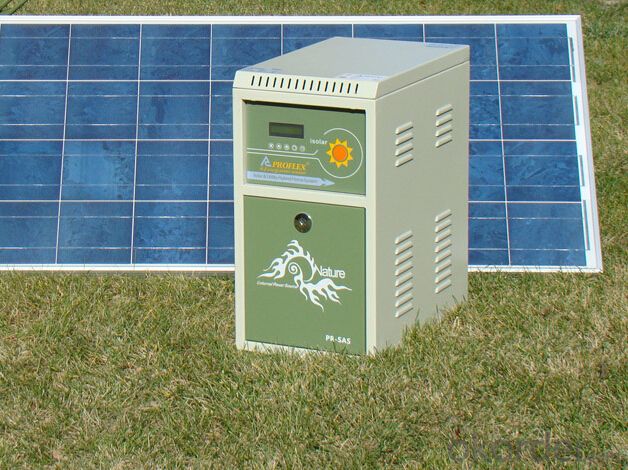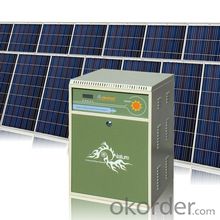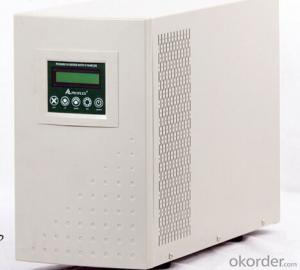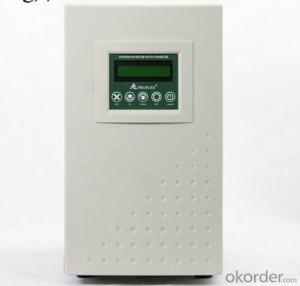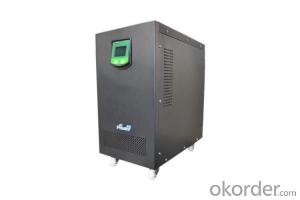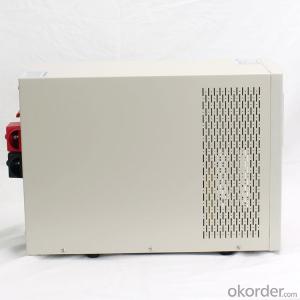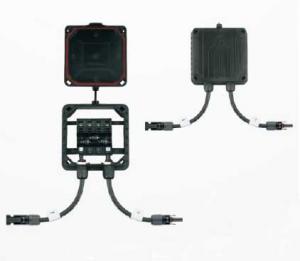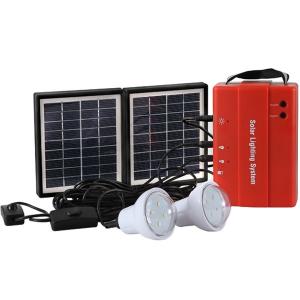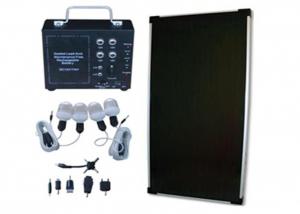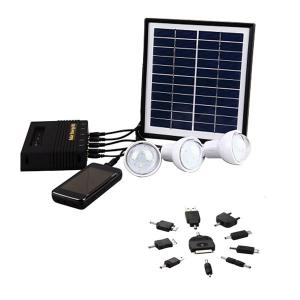Building Solar Energy Systems - Off Grid Solar Power System PR-SAS300A with Battery Tank 300W
- Loading Port:
- Tianjin
- Payment Terms:
- TT OR LC
- Min Order Qty:
- 10 pc
- Supply Capability:
- 10000 pc/month
OKorder Service Pledge
OKorder Financial Service
You Might Also Like
Specification
Specifications
1.Supply 2 work modes: to save electricity bill or to supply long time power backup.
2. Supply battery tank,high integrated.
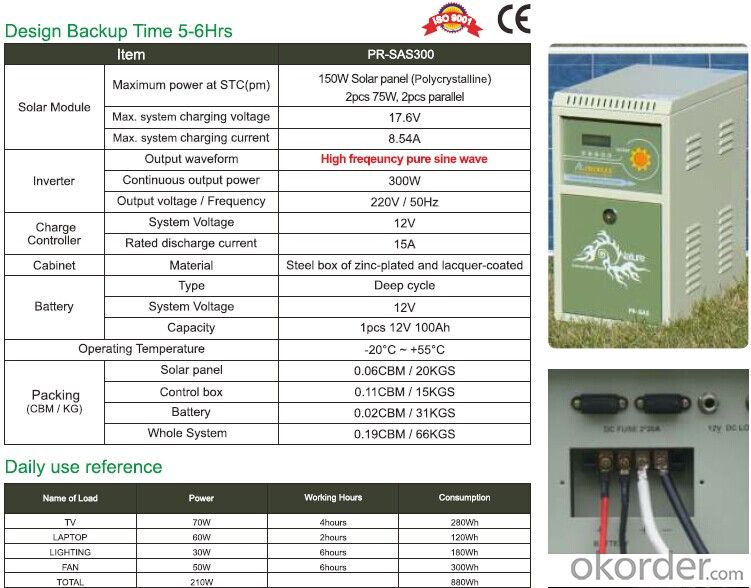

Daily use reference
TV 70W x 4 hours
Lighting 30W x 6 hours
Fan 50W x 6 hours
Laptop 60W x 2 hours
Total loading power: 210W
Total power consumption per day: 880Wh (0.88kWh/day)
AC solar power system consists of solar batteries, solar controller, battery, inverter components.
Used to solve rural or remote areas without electricity, such as highland, island, pastoral, villas, border posts and other military and civilian life electricity.
Warranty
CNBM Solar panel provides one of the most comprehensive module warranties in the industry:
· 10 years for product defects in materials and workmanship
· First 12 years for 90% of warranted minimum power
· Remaining 25 years for 80% of warranted minimum power
Certification
CNBM Solar panel strictly carries out the ISO 9001 quality control methodology and has implemented check points at every step of the production process to ensure our product performance durability and safety. The stringent quality control process has been confirmed by numerous independent agencies and LDK Solar modules earned IEC, TUV and UL certifications.
· IEC:IEC 61215, IEC 61730 (1&2), conformity to CE
· UL 1703 2002/03/15 Ed:3 Rev:2004/06/30
· ULC/ORD-C1703-01 Second Edition 2001/01/01
· UL and Canadian Standard for Safety Flat-Plate
· ISO 9001: 2008 Quality Management Systems
· CEC Listed: Modules are eligible for California Rebates
· PV Cycle: Voluntary module take back and recycling program
· MCS Certificate
FAQ
l Where can I buy your products?
You could find our products from dealers or contact our sales team directly. We will provide you with detailed services.
l How to contact us?
Contact details can be found from website www.okorder.com to contact us. We look forward to providing you with professional services.
l What is the application field of your products?
They can be used in the small photovoltaic (PV) grid power generation systems of family units as well as the commercial photovoltaic system such as BIPV, BAPV and etc.
l What kinds of modules do your inventers support?
Our inventers support most of mainstream components and modules in the market. Should you require more details, please do not hesitate to contact our technical personnel.

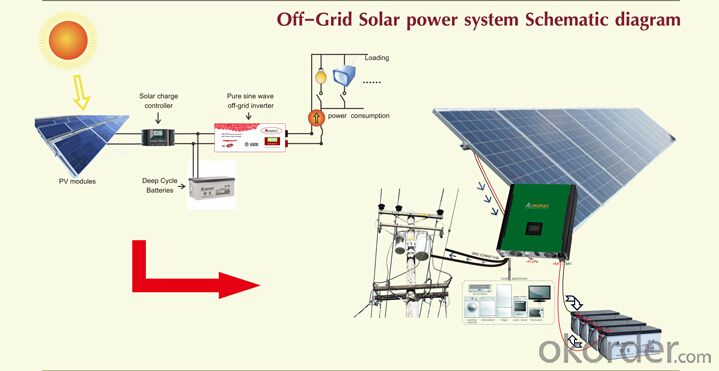



- Q: Can a solar energy system be installed on a farm?
- Yes, a solar energy system can be installed on a farm. In fact, farms are an ideal location for solar energy installations due to their vast open spaces and availability of sunlight. Solar panels can be mounted on rooftops of farm buildings or installed on the ground using mounting structures. The energy generated by the solar panels can be used to power various farm operations such as irrigation systems, lighting, heating, and cooling systems. Additionally, a solar energy system can help farmers reduce their reliance on traditional energy sources, lower their energy costs, and contribute to a more sustainable and environmentally friendly agricultural practice.
- Q: Can a solar energy system be installed in an area with a high bird population?
- Indeed, it is possible to install a solar energy system in an area abundant with birds. However, it is necessary to take certain precautions in order to minimize any potential risks or problems. Birds may be attracted to the solar panels and may perch on them or build nests. As a result, there is a possibility of bird droppings and debris accumulating on the panels, which can diminish their efficiency. To address these risks, there are several measures that can be taken. One option is to incorporate bird deterrents, such as spikes or netting, around the solar panels to dissuade birds from landing or nesting on them. It is important, though, to design these deterrents in a manner that does not block the sunlight required for the panels to produce electricity. Regular maintenance and cleaning of the solar panels can also contribute to their optimal performance. This entails removing any bird droppings, nests, or other debris that may accumulate over time. By keeping the panels clean, their efficiency can be maintained, and potential damage can be minimized. Furthermore, the selection of a suitable location for the solar energy system installation is essential. Placing the panels away from trees or structures that may entice birds to nest can help reduce the likelihood of bird-related issues. In summary, with proper planning, installation, and maintenance, it is feasible to successfully implement a solar energy system in an area teeming with birds while minimizing any potential negative impacts on its functionality.
- Q: Can solar energy systems be used in areas with frequent lightning strikes?
- Yes, solar energy systems can be used in areas with frequent lightning strikes. However, it is essential to take proper precautions to protect the system from potential damage caused by lightning strikes. This can be achieved by using lightning arrestors, surge protectors, and grounding systems to minimize the risk of electrical surges and ensure the safety and integrity of the solar energy system.
- Q: Are there any limitations to installing a solar energy system in a homeowner's association?
- Yes, there can be limitations to installing a solar energy system in a homeowner's association (HOA). Some HOAs may have specific rules and regulations regarding the installation of solar panels, such as restrictions on the size, location, or appearance of the panels. Additionally, the HOA may require approval or permits before installing a solar energy system. It is important for homeowners to review the HOA's guidelines and consult with the association before proceeding with the installation.
- Q: What is solar battery storage?
- Solar battery storage technology refers to the efficient method of storing energy generated by solar panels in batteries for future consumption. This system captures surplus electricity produced by solar panels throughout the day and stores it in batteries, instead of feeding it back into the grid. Subsequently, this stored energy can be utilized during periods when solar panels are unable to generate sufficient electricity, such as at night or on cloudy days. The advantages of solar battery storage are manifold. Firstly, it empowers homeowners and businesses to become more self-reliant and decrease their dependence on the conventional electrical grid. By storing excess energy, they can tap into it during times of peak demand or power outages, ensuring a steady and uninterrupted power supply. Moreover, solar battery storage optimizes the utilization of solar energy. Typically, solar panels produce more electricity than is immediately required, resulting in wastage or transmission back to the grid. By utilizing battery storage, this surplus energy can be stored and utilized later, thereby maximizing the utilization of solar power and diminishing the need for fossil fuel-based electricity. Furthermore, solar battery storage can contribute to reducing electricity bills. By utilizing stored energy during periods of high demand, when electricity rates are elevated, users can avoid paying higher prices for grid electricity. Consequently, this can lead to substantial cost savings over time. In summary, solar battery storage is an innovative technology that enhances the efficiency and dependability of solar energy systems. It enables users to store surplus energy for future use, reducing reliance on the grid, optimizing the utilization of solar power, and potentially reducing electricity expenses.
- Q: Can solar energy systems be used for powering transportation infrastructure?
- Yes, solar energy systems can be used for powering transportation infrastructure. Solar energy can be converted into electricity through the use of photovoltaic panels, which can then be used to power electric vehicles or be stored in batteries for later use. This can be particularly beneficial for public transportation systems, such as buses or trains, as well as personal vehicles. Solar-powered charging stations can be installed along highways or in parking lots, allowing electric vehicles to be charged using clean and renewable energy. Additionally, solar energy can also be used to power traffic lights, streetlights, and other infrastructure components, reducing the reliance on fossil fuels and lowering greenhouse gas emissions. Overall, utilizing solar energy for transportation infrastructure can contribute to a more sustainable and environmentally friendly transportation system.
- Q: Are there any tax credits available for solar energy systems?
- Yes, there are tax credits available for solar energy systems. The federal government offers a federal solar investment tax credit (ITC) that allows homeowners and businesses to deduct a percentage of the installation cost of a solar energy system from their federal taxes. Additionally, some states, local governments, and utility companies may also offer their own tax incentives for solar energy systems.
- Q: Can solar energy systems be used in areas with limited access to the electrical grid?
- Yes, solar energy systems can definitely be used in areas with limited access to the electrical grid. In fact, solar power is an ideal solution for such areas as it offers a decentralized and sustainable source of electricity. Solar energy systems, such as photovoltaic panels, harness the energy from the sun and convert it into usable electricity. These systems can be installed in remote locations without the need for extensive electrical infrastructure. By utilizing solar energy systems, areas with limited access to the electrical grid can become self-sufficient in meeting their energy needs. These systems can power essential appliances, such as lighting, communication devices, and small-scale machinery, providing reliable energy even in areas where traditional grid connections are not available or unreliable. Moreover, solar energy systems can bring numerous benefits to areas with limited grid access. They offer an environmentally friendly alternative to traditional fossil fuel-dependent energy sources, thereby reducing carbon emissions and combating climate change. Solar power systems also provide a reliable and consistent source of energy, reducing the dependence on diesel generators or other costly and polluting forms of energy. Additionally, solar energy can promote economic growth and development in remote areas. By powering essential infrastructure like schools, hospitals, and businesses, solar systems can improve education, healthcare, and economic opportunities. Moreover, the installation and maintenance of solar energy systems can create local jobs and foster entrepreneurship. To ensure the successful implementation of solar energy systems in areas with limited grid access, it is crucial to address challenges such as initial costs, technical expertise, and maintenance. However, with advancements in technology and decreasing costs, solar power has become increasingly accessible and affordable. Various organizations, governments, and non-profit entities are actively working to promote solar energy adoption in such areas and provide necessary assistance. In conclusion, solar energy systems are a viable and sustainable solution for areas with limited access to the electrical grid. They offer a decentralized, reliable, and environmentally friendly source of electricity, bringing numerous benefits to these regions. By harnessing the power of the sun, these systems can empower communities, promote economic development, and improve the quality of life for those living in remote areas.
- Q: What is the lifespan of solar cells used in solar energy systems?
- The lifespan of solar cells used in solar energy systems typically ranges from 25 to 30 years.
- Q: Can a solar energy system be installed in areas with high humidity?
- Yes, a solar energy system can be installed in areas with high humidity. High humidity may impact the performance of the solar panels to some extent, but modern solar panels are designed to withstand various weather conditions, including high humidity. Proper installation and regular maintenance can ensure the efficiency and durability of the system in such areas.
Send your message to us
Building Solar Energy Systems - Off Grid Solar Power System PR-SAS300A with Battery Tank 300W
- Loading Port:
- Tianjin
- Payment Terms:
- TT OR LC
- Min Order Qty:
- 10 pc
- Supply Capability:
- 10000 pc/month
OKorder Service Pledge
OKorder Financial Service
Similar products
Hot products
Hot Searches
Related keywords




